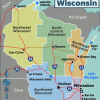Dr. E.J. Antoni is a public finance economist at The Heritage Foundation. This article is edited and adapted from prepared remarks delivered today before the U.S. Senate Committee on Banking, Housing and Urban Affairs.
Over the last three years, prices have risen across the American economy at rates not seen in four decades. Housing prices, in particular, have risen very quickly, even amidst generally fast-rising prices for all goods and services.
By any widely used metric, housing in the U.S. is considered unaffordable today for most American families. This unaffordability is commonly defined as rent or the cost of homeownership requiring a relatively high portion of an individual’s or a household’s income. The significant decrease in homeownership affordability as well as the increase in rent prices over the last three years were both caused by several public policy choices including elevated levels of federal expenditures and imposition of regulation.
A More Expensive Market
Both public and private estimates of median home prices have increased between 16% and 25% over the last three years. The Consumer Price Index (CPI) published by the Bureau of Labor Statistics estimates that rent prices have increased 20% over the last three years. While the CPI also includes an estimate for the cost of homeownership, this is imputed from rent prices. The current difficulty with this methodology is that rental prices have not increased at the same rate as the cost of homeownership over the last three years. Consequently, the CPI has significantly underestimated the true inflation rate by underestimating the increase in the cost of homeownership at only 19% since January 2021.
Since home purchases are usually financed, with the financing typically providing between 80% and 90% of the sales price, the affordability of a home is greatly impacted by interest rates. Thus, the relative cost of a home over time must compare not only the change in price but the change in interest rates as well.
The increase in home prices and interest rates from January 2021 through February 2024 caused the monthly mortgage payment (principal and interest) on a median price home to rise 101%, from about $969 to $1,952. These higher monthly mortgage payments cost a household an additional $11,794 per year for the same house. Across a 30-year mortgage, that is a difference of over $354,000, which is almost five times the median household income
This increase in monthly mortgage payment requires additional data for further context, especially personal income. In 2006, the Federal Reserve Bank of Atlanta began publishing a Home Ownership Affordability Monitor (HOAM) Index. A reading of 100.0 indicates average homeownership affordability with the median household income being sufficient to pay for a median price home. When the index is at 100.0 or higher, 30% or less of the median household income will pay for the median monthly housing payment including principal and interest charges of the mortgage, taxes, insurance, and private mortgage insurance until the homeowner has sufficient equity.
The HOAM Index utilizes the prevailing interest rate in its calculations. In January 2006, the index registered 73.3, indicating general unaffordability in the housing market following the severe market disruptions that began the previous year. At that time, 40.9% of the median household income was needed to buy the median price home. By early 2011, incomes had risen while both home prices and interest rates had fallen. The index breached 100.0 and remained above that level until mid-2013, after which point it fluctuated around the affordability threshold until 2019, at which point homeownership became markedly more affordable, even during the pandemic. After January 2021, however, the index dropped quickly and set a new record for rate of decline.
In addition to a nationwide reading, the HOAM Index also provides metrics for major metropolitan areas, with many of the nation’s most populous regions having much worse unaffordability than average. The cost of a median-price home is 47% of median household income in Boston, 54% in Miami, 62% in New York, 78% in San Fransisco, and 85% in Los Angeles. Like the nationwide figures, these percentages reference before-tax incomes.
Consequently, allocating 100% of the median household income is still not sufficient to pay for the median price home in places like San Francisco or Los Angeles. Only one dozen major metropolitan areas (defined as population over 500,000) in the entire country meet the HOAM Index’s affordability requirements and none of them are west of Des Moines-West Des Moines, Iowa. Even among smaller metropolitan areas, the western most affordable area is Williston, North Dakota.
It should be noted that these calculations do not simply use the national median household income, but the local median household income. Thus, unaffordability in areas with higher-than-average income cannot be dismissed as a product of a local higher cost of living that does not consider the corresponding higher local income. The wide disparity in homeownership affordability across the nation is primarily a reflection of local public policy, especially the regulatory environment.
Paying Much More
Interest rates and home prices have historically been inversely correlated so that an increase in interest rates put downward pressure on home prices while a decrease in interest rates put upward pressure on home prices. That relationship broke down recently, although there is evidence to suggest that these two factors have recoupled. The decoupling was starkly observed in 2023 when homeowners with low-interest mortgages raised asking prices as interest rates rose. Simultaneously, homebuilders also raised their prices as input costs rose, even as interest rates climbed higher. The supply of homes was thus curtailed, and prices did not fall with the rise in interest rates, effectively freezing the housing market.
High rent prices relative to incomes have also prevented many Americans from saving enough for a down payment on a home today. By the time they have saved enough money, the price of homes has typically risen and now a larger down payment is needed. All the while, their savings are losing value from the hidden tax of inflation.
Half of homebuyers today need a gift or loan from family and friends to have a sufficient down payment, indicating that many borrowers are even more leveraged than banking data would suggest. The reason for this leveraging is clear upon examining private housing market data which indicate that the income needed to afford a home has risen 80% since 2020 compared to only a 23% increase in median income. The median household income is 41% below the threshold needed to afford a median price home, the most unaffordable level in at least 40 years.
The stark reality is that there is now an entire generation of Americans who will likely never experience widespread homeownership. They will be the first generation of Americans to lose ground compared to their parents in this regard since the Great Depression.
The same fluctuations in prices and interest rates which have created a disparity between older, wealthier generations and younger Americans at the start of their careers have also exacerbated disparities along racial and geographic lines. To be clear, there is nothing inherent within immutable characteristics that causes this relationship. Rather, those characteristics are correlated with factors that themselves are correlated with the outcomes in question. This means that phenomena like inflation and the unaffordability of housing have disproportionately affected Blacks and Hispanics, as well as residents of rural areas. Lower-income households, regardless of race, ethnicity, composition, or geographic location, are more financially harmed by price and interest rate volatility.
Sources of Housing Unaffordability
Unprecedented federal spending over the last several years was the first link in a chain of events that caused a significant decrease in the affordability of both homeownership and renting. To finance trillions of dollars in new federal expenditures, the Treasury issued debt instruments, much of which was purchased by the Federal Reserve, the latter creating the money needed to buy the Treasuries in question. While this began in 2020, there was no significant increase in inflation that year for two reasons.
First, monetary action has long and variable lags so that inflationary impacts are delayed. Even still, there was an expectation of some inflationary impulse by September 2020, and it still did not occur. That was largely because of the second reason, which was that the Federal Reserve had been engaging in monetary tightening for the prior three years, reducing its balance sheet while increasing interest rates.
By the summer of 2019, the Federal Reserve had arguably overtightened monetary conditions and in September 2019 it temporarily lost control of interest rates and caused significant disruptions in the repurchase agreement market, requiring injections of liquidity to stabilize interest rates. These tight monetary conditions, combined with faster than expected economic growth, greatly diminished the impact of the initial fiscal expansion that occurred in 2020. By 2021, emergency federal expenditures related to Covid-19 were expiring, but they were replaced by new spending. Thus, what would have been a temporary increase in government spending effectively became permanent and multi-trillion-dollar deficits were institutionalized.
Simultaneously, the Federal Reserve continued its zero-interest rate policy (ZIRP) and provided such an excess of liquidity that the reverse repurchase agreement market peaked at $2.7 trillion, indicating difficulty maintaining even a near-zero interest rate floor. That allowed the Treasury to reduce borrowing costs and helped expand the market for Treasury securities. This combination of the federal government spending, borrowing, and creating trillion of dollars caused the fastest inflation in more than four decades. The depreciation of the dollar caused prices throughout the economy to rise. According to the CPI, the dollar has lost almost a fifth of its value in just the last three years.
Home prices were particularly affected by the Federal Reserve’s manipulation of interest rates. As explained previously, and as demonstrated in my prior research, industries where purchases are more often paid for with financing are more sensitive to changes in interest rates. The sharp reduction in interest rates caused consumer demand for housing to increase significantly. It also greatly increased demand from institutional investors who had access to unprecedented amounts of credit and unprecedentedly low interest rates. That incentivized these investors to buy new homes for the purpose of renting, something which would ordinarily be unprofitable. While this put upward pressure on the cost of homeownership by taking some housing supply off the market, it also converted that supply into houses available for rent, and thus put downward pressure on rent prices.
When the Federal Reserve belatedly began to raise interest rates and reduce its balance sheet, inflation had already increased to multi-decade highs. What followed were the fastest interest rate increases in 40 years. That sudden increase in interest rates had significant implications for the housing market, particularly when people had based decisions on Federal Reserve projections of continuing ZIRP for the foreseeable future.
Borrowers who had taken on excessive debt loads were faced with an inability to sell their home, because doing so would necessitate losing their low-interest rate mortgage. A new loan would carry an interest rate two to four times as high, meaning the borrower could afford a much smaller loan, sometimes half the size or less than their current loan. Referred to as “golden handcuffs,” this situation made it prohibitively expensive for millions of Americans to sell their homes except at prices far higher (sometimes higher by 50% or more) than that for which they purchased them.
Meanwhile, lenders now had a portfolio of low-interest rate assets coupled with liabilities whose interest rates were increasing. This mismatch of interest rates first came to a head a year ago around this time as several banks collapsed and the Federal Reserve created a new lending facility to temporarily provide liquidity for financial institutions on the wrong side of the interest rate trade. To counter the existing low-interest-rate assets on their balance sheets, distressed lenders must make loans at least as high or higher than today’s elevated interest rates. Even for lenders who are in otherwise healthy financial positions, private borrowers must compete against the Federal Reserve’s interest on reserve policy and reverse repurchase operations, both of which offer lenders a risk-free rate of return over 5% and currently occupy about $4.4 trillion of the market.
The result has been a drastic reduction in the supply of existing homes which has buoyed prices even as interest rates have risen from zero to the highest level in decades. The effect on existing homes prices has become so large that the price premium on new homes is virtually zero.
The disruptive change from inflationary low interest rates to higher interest rates and elevated prices has had a similar effect on homebuilders. The cost to build a new home is at a record high, surpassing the October 2022 level and homebuilders are unable to profitably produce a greater quantity of homes at a lower price. Due to higher input costs (called wholesale inflation), construction prices for new single-family homes remain over 20% above their pre-January 2021 trend. This has reduced the supply of new homes that producers can sell at a given price, irrespective of interest rates. Thus, the supply of new homes has also been reduced and prices remain elevated.
The False Blame Game
It is also important to note what did not cause inflation and the current cost-of-living crisis among America’s middle class, especially regarding housing.
While supply chain disruptions and other exogenous shocks can temporarily increase prices, the reversion to normal market conditions ultimately leads to prices returning to their previous level. The Federal Reserve Bank of New York’s Global Supply Chain Pressure Index returned to its long-run average a year ago and has spent much of the last 12 months below zero, meaning supply chains are less constrained than their historical average. Purchasing manager indexes also indicate that most global commodity shortages and price pressure are at or below their pre-pandemic levels while volatility is down and supply chains are not overstretched, but rather are underutilized.
Likewise, ethereal causes like “corporate greed” have not caused inflation. In the first place, corporations did not only begin seeking profits in January 2021. Attributing inflation to behavior which predates the idea of corporations themselves does not present a viable theory. Neither does the empirical evidence support such a claim. Since January 2021, prices for businesses and consumers alike have risen about 18%.
Excluding the more volatile food and energy components, wholesale and retail inflation are almost exactly equal on a cumulative basis. The cost increases which businesses have been paying are simply being passed on to consumers. For nearly the entirety of the last three years, businesses have actually shielded consumers from many cost increases, partly as an attempt to retain market share. Only within the last few months has the cumulative change in the average consumer price caught up to the cumulative change to the average price paid by businesses.
Additionally, corporate profits increasing nominally is not evidence of increased profitability in a meaningful sense for the same reason that an individual’s paycheck increasing nominally is not evidence that the individual is better off. Adjusted for inflation, both average corporate profits and individuals’ average weekly earnings have seen significant declines in recent years.
The Role of Regulation
Regulation has played a role in putting upward pressure on home prices, rent prices, and thus the cost of shelter for American families. One such example is the imposition of energy efficiency standards. Ostensibly, these reduce the lifetime costs associated with home and major appliances (water heaters, furnaces and heat pumps, air conditioners, refrigerators, ovens, dishwashers, ceiling fans, etc.), but the estimated savings provided by regulators are often incorrect. Regulatory costs to American households in the first two years of the Biden administration have been three times higher than what was estimated by the respective agencies.
These regulations have made new construction and retrofitting of existing homes more expensive and burdensome, the costs of which are simply passed on to homebuyers and renters.
Furthermore, the increased cost (whether in terms of higher rent or a higher monthly mortgage payment) are often never recouped over a person’s time in that dwelling because of the flawed estimates by regulators. Lastly, when efficiency requirements reduce how well appliances can perform a task, the appliance is often used for additional cycles, resulting in a net increase in energy used.
Another regulatory factor at the federal level is the amount of land owned by the federal government which is not available for development. This is particularly concering in the western portion of the country and is a key reason why there are no metropolitan areas in that region where homeownership is considered affordable. Because Native American reservations are mostly located in the western half of the country, the areas around these communities, and sometimes the communities themselves, are disproportionately affected by restrictions on homebuilding and thus experience higher costs.
There is also a local government parallel to this phenomenon where municipalities of varying sizes impose use restrictions which also curtail development. By constraining the supply of housing, whether single- or multi-family, these regulations put upward pressure on prices and decrease affordability. States like California have a disproportionate amount of such regulations, which is a chief cause of why California has the most unaffordable housing in America, both in terms of the most unaffordable markets and statewide averages.
Certain banking regulations have also helped increase the cost of building housing. Any measures which divorce interest rates and other loan pricing from a borrower’s default risk will impose inefficiencies and therefore additional costs on housing transactions broadly, transactions which are heavily dependent upon deep, liquid credit markets. On a large scale, this also results in systemic risk, as was seen in the so-called mortgage meltdown beginning in 2005, which sparked a global financial crisis and the Great Recession.
Counterintuitively, many subsidies of the lending process directed at making borrowing less expensive have not accomplished this aim. Instead, the benefits from such subsidies typically go to either lenders, landlords, or homebuilders, not renters and homebuyers. This is because subsidies and regulatory impositions which allow people to borrow more also allow those borrowers to bid up the price of homes and rental units.
Corrective Action
If Congress seeks to alleviate many of the problems afflicting the housing market and American families, the best course of action would be to immediately reduce federal expenditures. Such action would reduce crowding out and increase the efficient allocation of resources within the private economy. It would also reduce borrowing by the Treasury and the lower demand for loanable funds would cause interest rates to fall. With less Treasuries being auctioned, there would be less political pressure on the Federal Reserve to finance the Treasury’s deficit with newly created money. That, in turn, would reduce inflation. This chain of events is exactly the opposite of what caused the current affordability crisis and reversing the cause will reverse the effects.
Congress should also consider restraining the Federal Reserve, whose manipulation of interest rates and money markets has led to inflation, recessions, and played a necessary role in putting the dream of homeownership firmly outside the reach of millions of Americans. Furthermore, the Federal Reserve’s implementation of ZIRP ultimately created a situation which put American families at a competitive disadvantage in terms of financing a home purchase, thus forestalling homeownership for years, if not preventing it forever, while also spurring the highest inflation in 40 years. This was due to the unprecedented level of excess liquidity provided by the Federal Reserve.
With reverse repurchase agreements still at $793 billion, there is still excess liquidity given today’s interest rates as well as the supply and demand of loanable funds. The Federal Reserve should also be made to return its reserve policy and agreement to repurchase facilities to normal operating conditions, while rapidly reducing its balance sheet to compensate. This would increase capital available to private borrowers by over $4 trillion without putting upward pressure on inflation.
Congress and the executive branch can work together to rollback ineffective regulation and land-use restrictions. Allowing consumers to choose what level of energy efficiency they want for their appliances will reduce costs and reward producers who innovate. In many cases, it will actually reduce energy use on net while also reducing costs for renters and homebuyers. Likewise, allowing development, particularly in the western region of the country, will greatly increase supply, decrease cost, and allow people more freedom in choosing where they live.
Congress can also consider measures to increase financial literacy and tie the reception of federal money to financial literacy tests among recipients.
While a lack of financial literacy did not cause the current housing affordability crisis, the dual shocks of rapidly rising interest rates and rapidly rising home prices exacerbated the effects of the preexisting disparity between the financially illiterate and the rest of the population. Unaware of how to navigate these troubled waters, many Americans found themselves in situations which ultimately led to them being unable to afford their rent or monthly mortgage payment. The record of history is quite clear that no amount of housing subsidies, in whatever form, bestow upon the recipient the knowledge of how to navigate the housing market, or even how to prepare a monthly budget. It is irresponsible to provide subsidies which put families into positions that ultimately lead to evictions.
Banking regulation should also be reexamined, with particular attention paid to lending requirements imposed on financial institutions. Many of these requirements force banks, credit unions, other mortgage originators, as well as investment firms which bundle mortgage-backed securities, and credit rating agency to consider immutable characteristic in lending, instead of focusing on a borrower’s ability to repay (and therefore, default risk). Such regulations are harmful to the housing market generally but also specifically to the very groups which such regulation is ostensibly designed to help. Housing subsidies in the form of loan guarantees have a similar effect.
When the lender bears no cost for the borrower defaulting, the lender has no incentive to do due diligence, which increases risk, misallocates resources, and raises prices. Such subsidies incentivize lenders to loan to financially illiterate borrowers at high interest rates when there is very little likelihood the borrower will be able to repay. The result is not only a burden on the taxpayer, but a family being evicted from their subsidized dwelling, while the lender loses nothing.
There are also several courses of action that Congress should avoid. First, simply subsidizing the housing market broadly will not increase homeownership in the long-run nor alleviate the cost-of-living crisis. It will not reduce home prices or rent prices but will have the opposite effect. The benefits of such untargeted subsidies go overwhelming to lenders, landlords, and homebuilders.
Likewise, Congress should avoid expanding welfare programs which incentivize people not to work and to remain on government assistance forever. Such programs trap people in a cycle of dependency which usually becomes intergenerational. Expanding these measures will also add to the federal deficit which is already at an annualized $3 trillion for the current fiscal year.
Congress must also not ignore local socioeconomic conditions when evaluating proposed legislative responses to the high cost of housing. Factors like crime are not eliminated by building more low-income housing in a high-crime area. Instead, the crime causes the rapid deterioration of the neighborhood after federal monies have been poured in to provide more housing. These underlying conditions must be dealt with if the broader health of the community in question is to improve.
Lastly, Congress should under no circumstances extend subsidies to, or set loan prices for, entire classes of people based on factors like immutable characteristics or type of employment. Loan terms should always be based on a borrower’s ability to repay a debt.
















Not me mention of the 10 million illegals in the past few years! They have taken up a large segment of lower income rentals and homes. That increase was far above the ability to increase new construction. If rates have increased this much and prices haven’t dropped or remained flat, the only reason is a big increase in the number needing housing. Most of the illegals are going to urban areas and we are seeing this everyday. It is a huge distortion of the market and is intentional
In 2021 we saw the large Hedge Fund backed corporations buy huge amounts of single family homes at over the market prices and that in turn shrank the housing supply driving prices higher.
Most of the illegals going to urban areas and are very family oriented which have a number of working family members are taking the urban rentals driving prices higher and depleting the rental market even more.
The corporations knowing that they had shrank the available housing market turned the homes they purchased into higher priced rentals to fill an already depleted rental market.
Then along came COVID, which shrank the available housing supply again driving prices even higher. Then when inflation increased because of supply chain issues and labor shortages during COVID the government raised interest to slow inflation
and caused leading rates to increase substantially making housing even less affordable. Wages cannot keep up with inflation, increasing home prices and higher interest rates caused by corporate greed and illegal immigration.
We must take a stand now and make changes before it’s to late
Debt to income ratio also plays an important role in a buyer getting a loan. One of the factors is the credit card debt. When the interest rates rose on housing loans, so did the credit card rates. No matter the persons credit rating or balances, the rates jumped up to over 20%+. Consumers have been used to subsidizing their lifestyles/emergencies and are now struggling to pay them off.
Looks like most of us are on the same page to some degree or another. Easy to follow and insightful with a logical cause and effect throughout. I’ve thought part of the inventory problem was people holding on to the low rates. I had not thought about the consideration that selling and the cost of taking on a new mortgage would not make it worthwhile for some. and simply not attainable for others. My wife and I have talked about selling our vacation home for several years & I’ve always been the first to say, “OK then what are we going to buy,” meaning just to get something similar to what we already have would cost us substantially more so……We stay put. Great article!
BRAVO!! Thank you for stating facts and truth!!
Too bad that the government nor national news will never let the public know about any of this.
Maybe I missed it but I didnt see anything about all the extra immigration which is causing the shortage of housing causing prices to go higher. We we arent suddenly having more babies in America so the need for more housing is not caused by us……